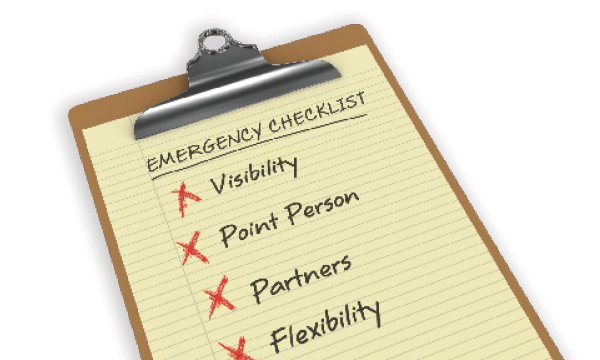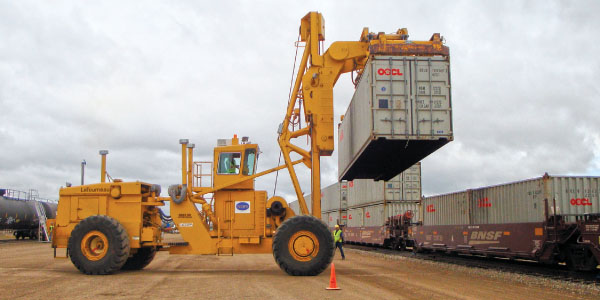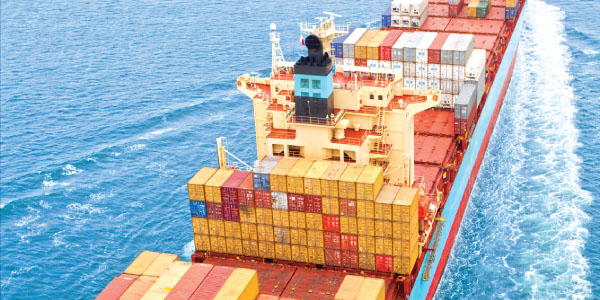Articles
H.O.W.

How to Mitigate Supply Chain Disruptions
As supply chains trend toward demand-driven, lean inventory models to eliminate waste, reduce costs, and increase responsiveness, their exposure to risk grows. When natural disasters, political upheaval, labor strife, supplier failures, and countless other types of supply chain events arise, shippers need to react quickly—without incurring undue costs—to keep production in line with demand. Companies […]
Read More
How to Drive Visibility Through a Supply Chain Network Control Tower
As supply chains become increasingly stretched geographically and functionally, the challenge of driving visibility through layered and disparate networks becomes infinitely greater. When it comes to managing compliance among third-tier suppliers in Asia, speeding asset turns at a domestic distribution yard, or keeping track of carrier partners and shipments on the ground, at sea, and […]
Read More
How to Measure Sustainability Program Performance
For many companies, sustainability has become a burning platform for exploring smarter ways to move product through the supply chain. Sustainability principles dovetail with transportation and logistics best practices to rationalize natural resource and raw material consumption, and ultimately reduce operating expenses. In addition to the economics of eliminating environmental waste, an element of risk […]
Read More
How to Select a Returns Management Partner
As retailers turn over stones looking for ways to reduce costs, eliminate waste, become greener, and raise the bottom line, returns management is an area ripe for picking. What was once written off as a lost cost has now become a can’t-miss opportunity—and for good reason. In 2011, U.S. consumers returned more than eight percent […]
Read More
How to Manage the Supply Chain Following a Natural Disaster
Planning for supply chain exceptions is increasingly an expectation for risk-sensitive shippers. The last decade has unleashed a flood of global weather disasters, from Hurricanes Sandy and Katrina to the eruption of Iceland’s Eyjafjallajokull volcano to the earthquake and tsunami in Japan. Each has impacted business operations in different ways. Failing to properly react to […]
Read More
How to Find Savings Through Landed Cost Analysis
As shippers adapt sourcing strategies to build redundancy, economy, and responsiveness into their supply chains, the complexity of drilling down total landed costs increases. Shippers often focus resources and attention on procurement, looking only at production and logistics spend. At a more granular level, a myriad of other factors can impact the total supply chain […]
Read More
How to Ship in Alaska
The "last frontier" can be a daunting place for shippers moving freight unless they select the right airfreight forwarders to work with. Alaska is twice the size of Texas and has 640 square miles of land for every mile of paved road. When waterborne transport isn’t an option, freight moving in and out of Alaska […]
Read More
How to Balance Export Demand
While much has been said about the United States’ anemic manufacturing sector and the stress it places on sustainable economic growth, agriculture exports are booming. The United States remains a net exporter of food and delivers half the world’s grain supply. In 2010, China became the largest export market for U.S. agriculture with soybeans, cotton, […]
Read More
How to Improve Maritime Cargo Security
When U.S. Customs and Border Protection (CBP) introduced the Customs Trade Partnership Against Terrorism (C-TPAT) initiative in the aftermath of Sept. 11, it gave government, shippers, carriers, port authorities, and other transportation and logistics intermediaries a platform to build better security protocol into the supply chain. As a consequence, shippers today are taking cues from […]
Read More
How to Benefit from SaaS TMS
Emerging technology platforms are accelerating the maturation of transportation and logistics solutions, particularly those that enrich and empower the user community by integrating partners and aggregating data. The Software-as-a-Service (SaaS) transportation management system (TMS) is a prime example. SaaS TMS is a single-instance, multi-tenant environment where customers and their partners access a shared solution via […]
Read More